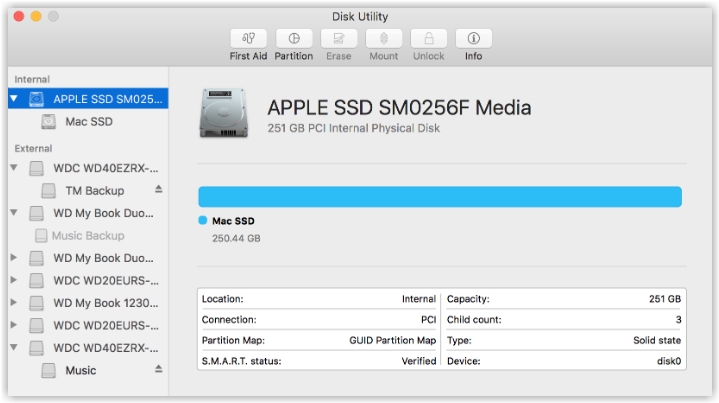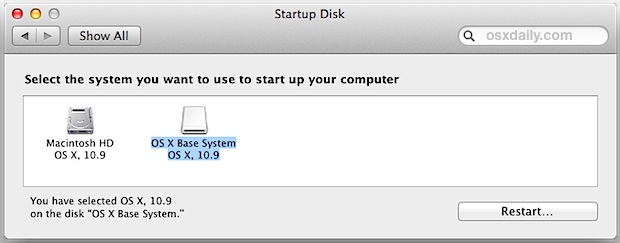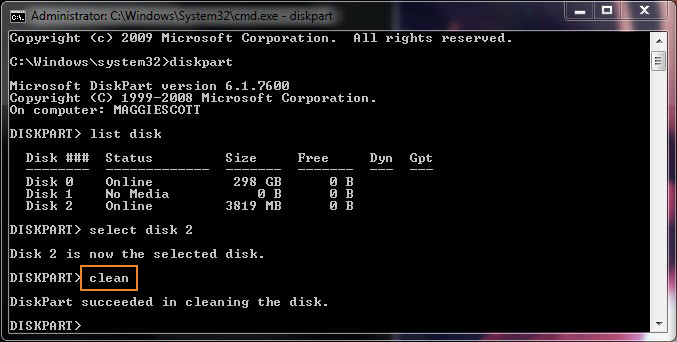
- #Which disk is my boot drive mac install#
- #Which disk is my boot drive mac pro#
- #Which disk is my boot drive mac software#
- #Which disk is my boot drive mac windows#
#Which disk is my boot drive mac pro#
In Ken’s situation, he would put the Mac mini into Target Disk Mode, attach it to his MacBook Pro using FireWire or Thunderbolt, and then boot the MacBook using the mini’s hard drive, producing the same basic result as if he had physically removed the mini’s drive and installed it in his MacBook.

From a user perspective, the internal drives of a TDM-connected Mac appear indistinguishable from those of an external drive enclosure.īut an even more interesting aspect of TDM is that it allows a user to view another Mac’s hard drive as a potential boot drive, and to boot natively into OS X with a combination of one computer’s hardware and another computer’s software. If a Mac won’t boot, a user can connect it to a working Mac, initiate Target Disk Mode, and then, if the hard drive is still functioning, view the drive’s contents. TDM is most often used to help diagnose malfunctioning Macs. TDM allows a user to connect two Macs using either FireWire or Thunderbolt, allowing one Mac to access the other’s internal drives as if they were external FireWire or Thunderbolt drives. For example, if you have a 1TB internal disk, you could buy a single 2TB external drive, divide it into two 1TB partitions, and then put your bootable duplicate on one while using the other for versioned backups.The answer to your question arrives courtesy of a feature called Target Disk Mode (TDM), which Apple introduced way back in 1991 with the PowerBook 100. You don’t need to keep two different hard drives around for your two types of backup. The second is versioned backups (which store copies of your files as they appeared at many points in time) using Apple’s built-in Time Machine or any of numerous other backup utilities. The first is bootable duplicates of your entire disk, using a program such as Bombich Software’s Carbon Copy Cloner (donation requested) or Shirt Pocket Software’s $28 SuperDuper!. I recommend maintaining two kinds of backups. That can’t be your main startup volume, but it could be an external disk-or another partition of your internal disk. If you want to share a single iPhoto library between two or more user accounts on the same Mac, one way to do so, per Apple’s advice, is to move it to a volume where ownership is ignored. When trouble strikes, you can boot up from this volume and fix some problems without having any secondary media at all. But another option is to keep a small partition on your main disk that includes a bootable copy of OS X and a repair utility or two. That other volume could be an external hard drive or a bootable DVD. If your startup volume develops disk errors, you may need to run a repair program (such as Disk Utility) from another volume in order to fix them.
#Which disk is my boot drive mac windows#
Unfortunately, Boot Camp Assistant won’t work if your disk is already partitioned, so if you intend to use Boot Camp, you’ll have to stick to just two partitions (one each for Windows and OS X). If you use Boot Camp Assistant (built into OS X 10.5 Leopard and later) to run Windows on your Mac, it creates a special partition just for your Windows installation.
#Which disk is my boot drive mac software#
When you need to run a different version of the operating system-say, for testing, or to use older software that won’t run under a newer OS-open the Startup Disk pane of System Preferences, select the partition you want, and click on Restart.
#Which disk is my boot drive mac install#
Divide your disk into one partition for each version of OS X, and then install the operating systems separately. If your Mac is capable of running multiple versions of OS X (for example, you have an early Intel-based iMac that can run Tiger, Leopard, or Snow Leopard), you can partition your drive so that you can use more than one. So why would you ever bother? Here are five good reasons: Partitioning can waste space and even decrease your hard drive’s performance. I know some people who have partitioned their Macs’ hard drives for decades, but can’t really give a good reason for doing it. You can also choose from several third-party utilities, such as Prosoft Engineering’s $99 Drive Genius 2 and Coriolis System’s $45 iPartition that can change a drive’s partitioning without erasing it. You can use Disk Utility (found in /Applications/Utilities) to repartition a drive, although doing so normally requires erasing the entire drive in the process. Any internal (IDE or SATA) or external (FireWire, USB, or eSATA) disk can be reorganized into one or more volumes called partitions.Įach partition appears on your Desktop as an independent disk, and you can even mix and match formatting methods from one partition to the next on the same disk. If the need arises, you can split that disk up.


When you get a new Mac, it comes with one startup drive (a hard disk or, in a few cases, a solid-state disk) named “Macintosh HD.” This arrangement is perfectly fine for most of us, but it’s not your only option.


 0 kommentar(er)
0 kommentar(er)
